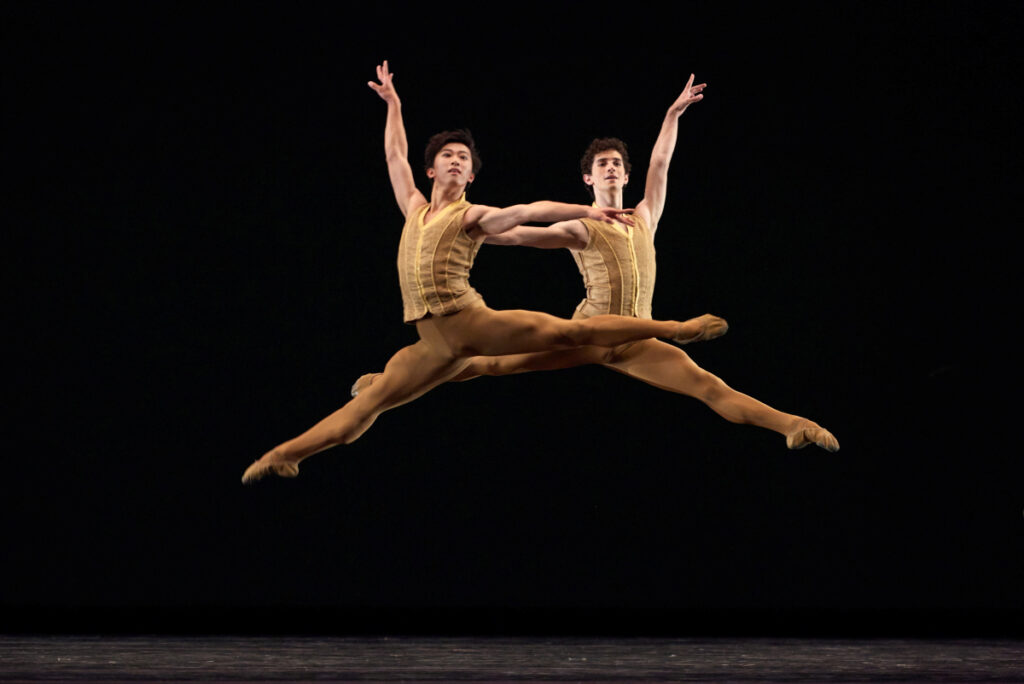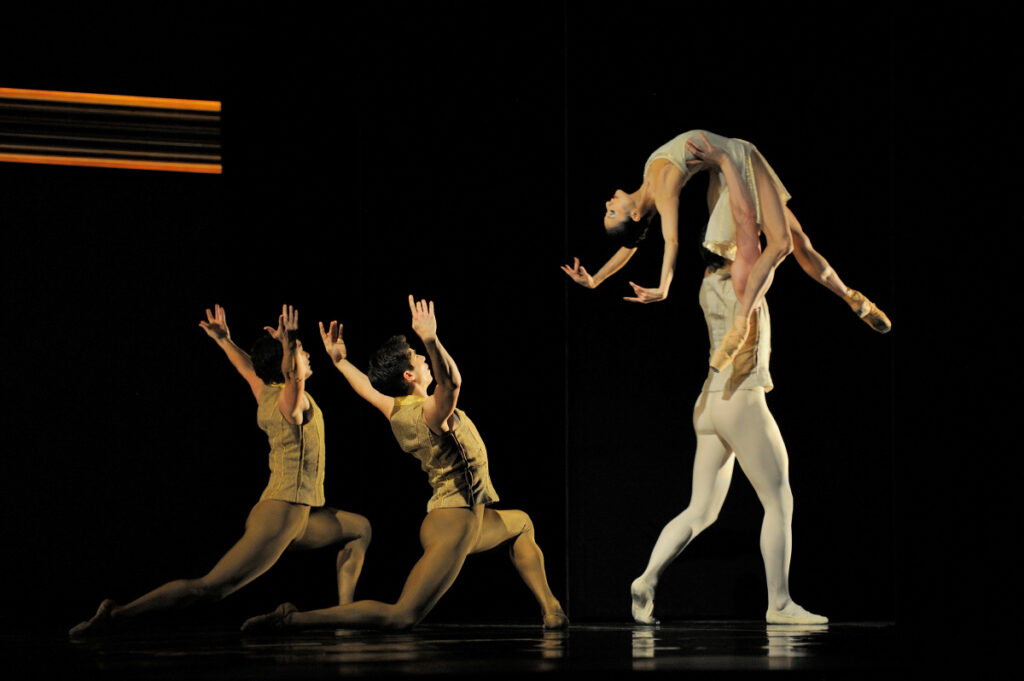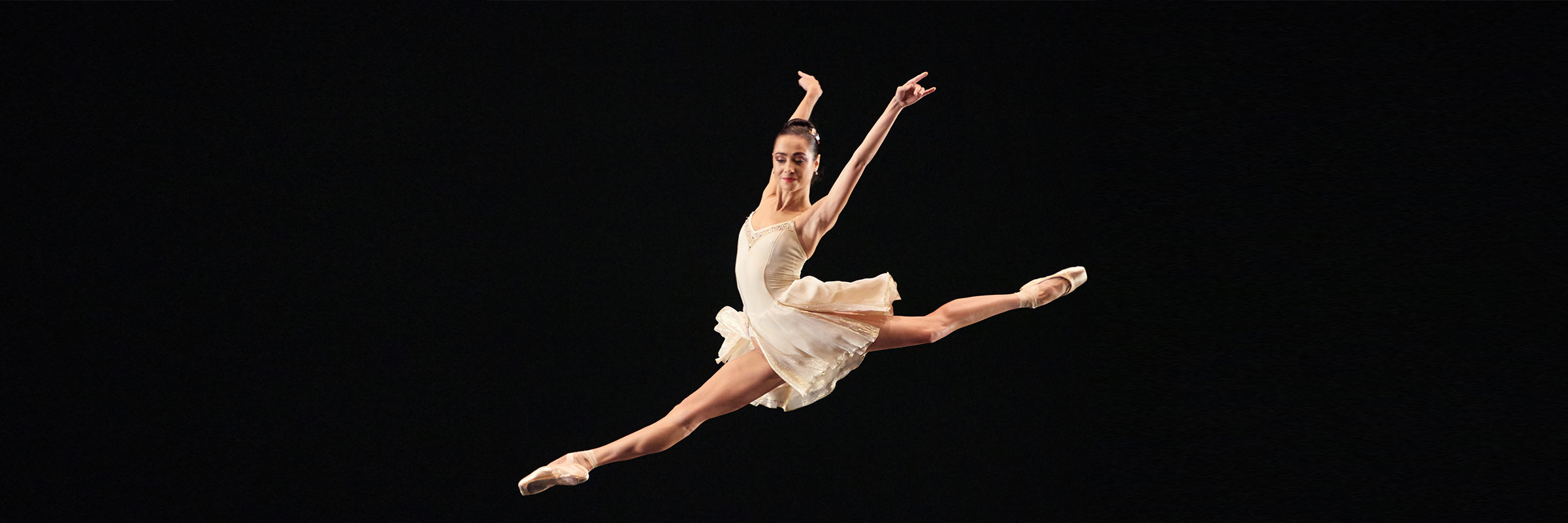About Tomasson’s Caprice
“Be More Daring. Be Joyous.”
“Danceable, very danceable.” That’s what San Francisco Ballet Artistic Director & Principal Choreographer Helgi Tomasson thought when he first heard Camille Saint-Saëns’ Symphony No. 2. For his first ballet since his 2011 Trio, Tomasson chose music that’s big, exhilarating, and off the beaten choreographic track. With two adagio sections—the very brief one in Symphony No. 2., plus the generous one he added from the well-known Symphony No. 3—Tomasson ended up with a lively, varied score that allowed him to take a fresh approach to structure and scale.
Symphony No. 2 was written when Saint-Saëns was 24—for him “not that early, because he was a child prodigy,” says Music Director & Principal Conductor Martin West. “But it’s still quite young to do a symphony of any major importance. He was playing major recitals when he was five and memorized Bach’s entire Toccata and Fugue by the time he was six.” West isn’t sure why Saint-Saëns wrote such a short adagio (a slow movement that typically serves as a ballet’s centerpiece), but it does indeed flash by with no opportunity to develop an expansive pas de deux. “All that beautiful music—a great beginning, a great finale,” Tomasson says. “But it needed something else.”
He found what he calls “a beautiful adagio” in Symphony No. 3. He gave the short adagio from Symphony No. 2 to three men; for the longer adagio, he decided to forgo tradition and use not one but two principal couples: first one, then the other, then both together. “That would be different structurally,” Tomasson says. “Always constant in the back of one’s mind is to try to get out of the box; don’t do something exactly the same way all the time.” Lush and luxurious, the adagio is emotional without being romantic. “It has a sway to it, but I don’t approach it as a love pas de deux,” he says. “It’s just an interpretation of what that music means.”

Music as big and grand as Saint-Saëns’ symphony begs for a full stage, and Tomasson responded. He began with five corps de ballet couples, because he likes to work with odd numbers; but as rehearsals progressed, he found that he “didn’t use the five couples the way I thought I would, structurally or musically. And particularly when we got to the final movement, I felt we needed to have more symmetry.” He added another couple because he wanted to have “a feeling of a big group out there,” he says. “The music is so wonderful; it builds and builds.”
Principal Dancer Frances Chung sees each movement as having “a different flavor,” she says. “In the first movement, you’re like pow, pow, pow! Nonstop technique. And the third movement, for us, is more playful, which I really enjoy. The fourth movement starts with the adagio couple, and then my partner and I do another adagio; it’s more mature.” She sees her role as “displaying everything you are as a dancer. My partner and I are in the first, third, fourth, and fifth movements, so there’s a lot of dancing. It’s quite difficult stamina-wise.”

Principal Dancer Mathilde Froustey says she was thrilled to be part of the creation of a neoclassical ballet. New classically based ballets aren’t done at Paris Opera Ballet, Froustey’s previous company. “To have Helgi with me in the studio makes me feel classical ballet is still alive,” she says. “It was very emotional.”
It’s emotional for Tomasson too. In rehearsal one day, he urges the corps to enter with more abandon. “Be more daring,” he tells them. Dancers sometimes approach a classically based ballet too seriously, he says, “and I don’t look at it that way. I’m saying, ‘Just go for it. Enjoy.’ I think the music is very joyous.”
THIS PRODUCTION WAS PART OF THE 2022 SEASON
by Cheryl A. Ossola
Header Image: Mathilde Froustey in Tomasson’s Caprice // © Erik Tomasson








